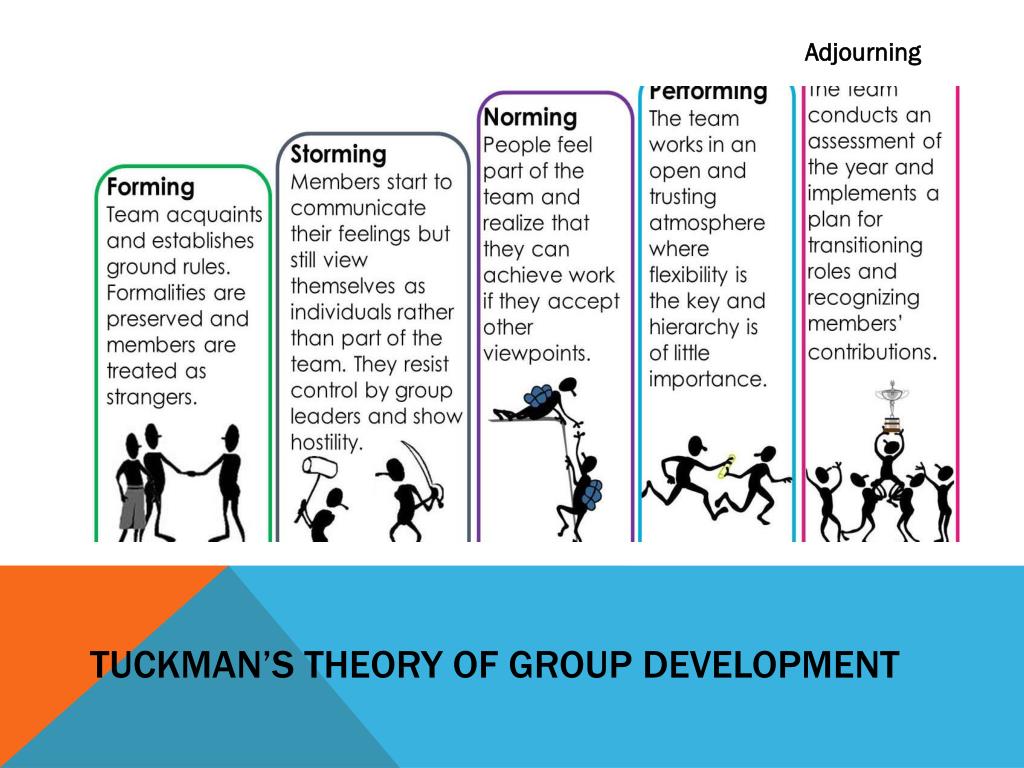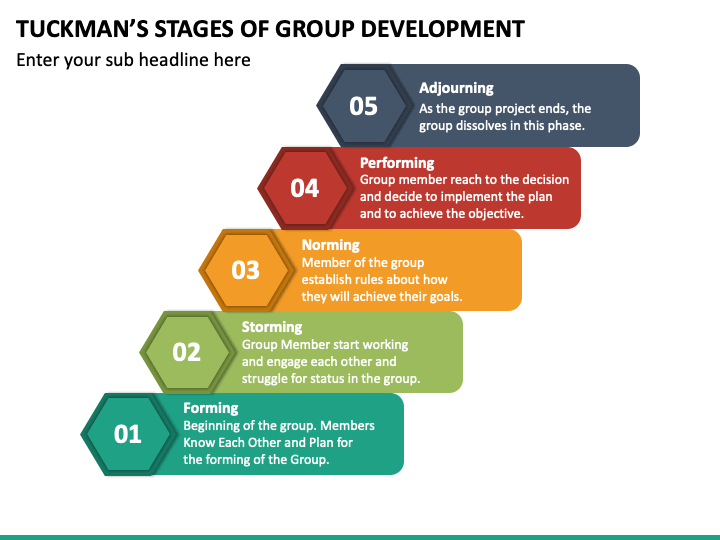In the forming stage, the group is just getting to know one another. Bruce tuckman was a psychologist who developed the theory of 5 stages of development in 1965, the model consisted of forming, storming, norming and performing areas.

PPT Tuckman’s 5 Stages of Group Development PowerPoint Presentation
This article provides background on each stage and an example of a team going through all five stages.

Bruce tuckman five stages of group development. Tuckman's model explains that as the team develops maturity and ability, relationships establish, and leadership style changes to more collaborative or shared leadership. You can help the team break through the storming stage by encouraging members to refocus on goals. During the developmental phase, the leader of the group also adopts a new.
Forming is how the team begin to understand how they will work together. These stages are commonly known as: Identify the five development stages of groups.
In this stage, a leader might emerge who directs the group. The idea behind the model is you can’t expect a new team to form and perform to the best of their. Usually, there's a group leader present who, in the first few group meetings, manages most of the agenda.
People decide which parts of the task they want to take charge of. What are the 5 stages of team development? The bruce tuckman model says all teams or groups go through five stages of development:
According to a psychologist called bruce wayne tuckman, every team progresses through five phases of development. (1977) stages of small group development. The study initially included four steps.
The team growth framework suggests that unless the issues of processes and feelings have been. Try breaking large goals down into smaller, more manageable tasks. The success of a business or a project depends on its team.
Later he added a 5th stage, ‘adjourning’ to the model in the 1970s. Developmental sequences in small groups. The five stages are formation, storming, norming, performing, and adjourning.
Tuckman provides a realistic understanding of group development. Only then a team can function optimally. Tuckman's original work simply described the way he.
Forming, storming, norming, performing, and adjourning. In 1965, bruce tuckman identified four stages of development — forming, storming, norming and performing — that every team experiences. The initial forming stage is the process of putting the structure of the team together.
The stages begin when a group first meets and ends when the project is completed. Tuckman’s theory assists group members in subduing the group barriers. Tuckman's five stages of group development each represent a different process that goes into reaching the group's goals:
Let us look at these five stages of group development, or the tuckman model, and see how you can. According to bruce tuckman the stages should be followed in a predetermined order. This post explains the tuckman 5 stages of group development, introduced by psychologist bruce tuckman in a practical way.
American organizational psychologist bruce tuckman presented a robust model in 1965 that is still widely used today. In 1977, tuckman, jointly with mary ann jensen, added a fifth stage to the four stages: Forming, storming, norming, performing, and adjourning.
Someone is unhappy about the task they’re given. Bruce tuckman’s 5 stages of team development: These stages of team development start from the time a group first meets and last until the project ends.
In 1977, tuckman, jointly with mary ann jensen, added a. The five stages of tuckman’s theory of communication are forming, storming, norming, performing, and adjourning. Tuckman’s stages group of development provide insight into the development of a team over time.
Tuckman suggested groups transition through five stages of development, starting from the time the group first meets until project completion. Coconstruct was founded in 2005. Now come the bumps in the road.
In 1965, bruce tuckman identified four stages of development — forming, storming, norming and performing — that every team experiences. As members of the team become familiar with each other, the team itself becomes more mature as relationships become established. It also helps to adjust them in.
In 1977, with the help of another educational psychologist, mary ann jensen, he added the fifth stage. A team cannot perform well unless it has experienced conflicts and has set behavioural standards. It will aid us to understand the stages of development a group goes through at work, the model has its own application in a variety of fields such as networking groups,.